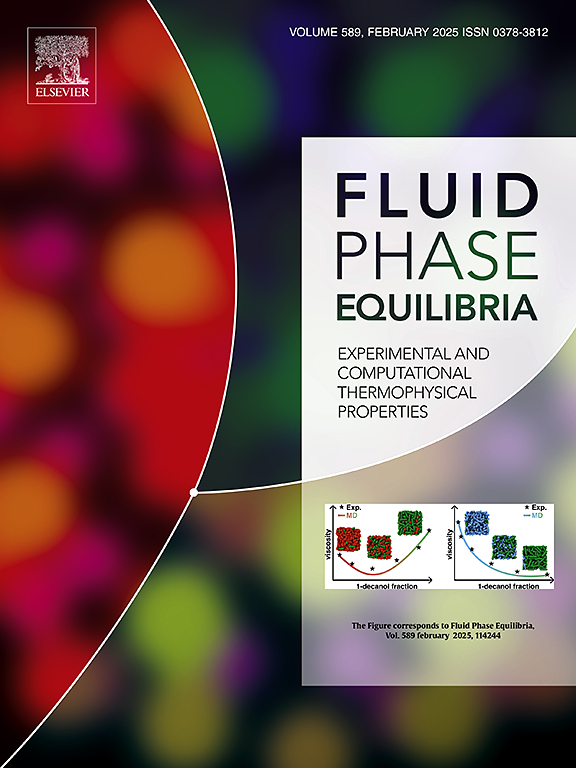Thermodynamic perturbation coefficients for confined alkanes via Monte Carlo simulations
IF 2.8
3区 工程技术
Q3 CHEMISTRY, PHYSICAL
引用次数: 0
Abstract
Modeling adsorption has been a challenge for more than a century. Different approaches within different scales have been proposed: from empirical models to equations of state, from classical Density Functional Theory to molecular simulations. Particularly equations of state are of interest for industrial applications. They are usually based on the assumption that the confinement effect can be simply added as a Helmholtz free energy contribution to the fluid–fluid Helmholtz energy. To verify this hypothesis, we propose a new conceptual framework to model the solid–fluid adsorption process, in which the reference fluid is a confined hard-chain, and the perturbation system contains the dispersion interactions among the fluid segments. Two strategies are employed: Barker–Henderson and Weeks–Chandler–Andersen. The solid material is conceived as an implicit wall imposing an external potential, a 10-4-3 Steele potential, on the fluid within a slit pore. The fluid–fluid interactions are described by a Mie potential. Applying Configurational-Bias Monte Carlo (CBMC) simulations, we compute the first- and second-order perturbation coefficients. Our findings show minimal confinement influence on the first perturbation coefficient. The second perturbation coefficient exhibits more complex behaviors, with divergences for short chains at high densities and long chains at low densities. These differences are due to preferred orientations and density peaks near confinement walls.

求助全文
约1分钟内获得全文
求助全文
来源期刊

Fluid Phase Equilibria
工程技术-工程:化工
CiteScore
5.30
自引率
15.40%
发文量
223
审稿时长
53 days
期刊介绍:
Fluid Phase Equilibria publishes high-quality papers dealing with experimental, theoretical, and applied research related to equilibrium and transport properties of fluids, solids, and interfaces. Subjects of interest include physical/phase and chemical equilibria; equilibrium and nonequilibrium thermophysical properties; fundamental thermodynamic relations; and stability. The systems central to the journal include pure substances and mixtures of organic and inorganic materials, including polymers, biochemicals, and surfactants with sufficient characterization of composition and purity for the results to be reproduced. Alloys are of interest only when thermodynamic studies are included, purely material studies will not be considered. In all cases, authors are expected to provide physical or chemical interpretations of the results.
Experimental research can include measurements under all conditions of temperature, pressure, and composition, including critical and supercritical. Measurements are to be associated with systems and conditions of fundamental or applied interest, and may not be only a collection of routine data, such as physical property or solubility measurements at limited pressures and temperatures close to ambient, or surfactant studies focussed strictly on micellisation or micelle structure. Papers reporting common data must be accompanied by new physical insights and/or contemporary or new theory or techniques.
 求助内容:
求助内容: 应助结果提醒方式:
应助结果提醒方式:


